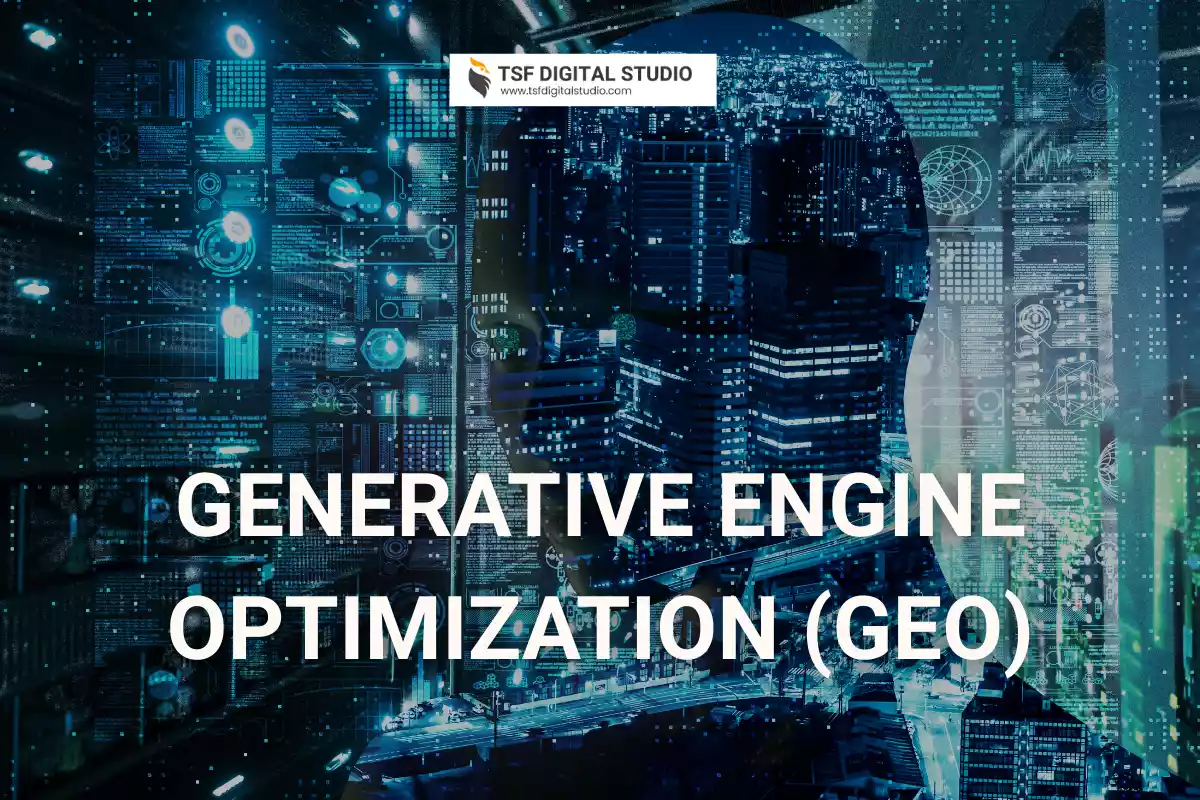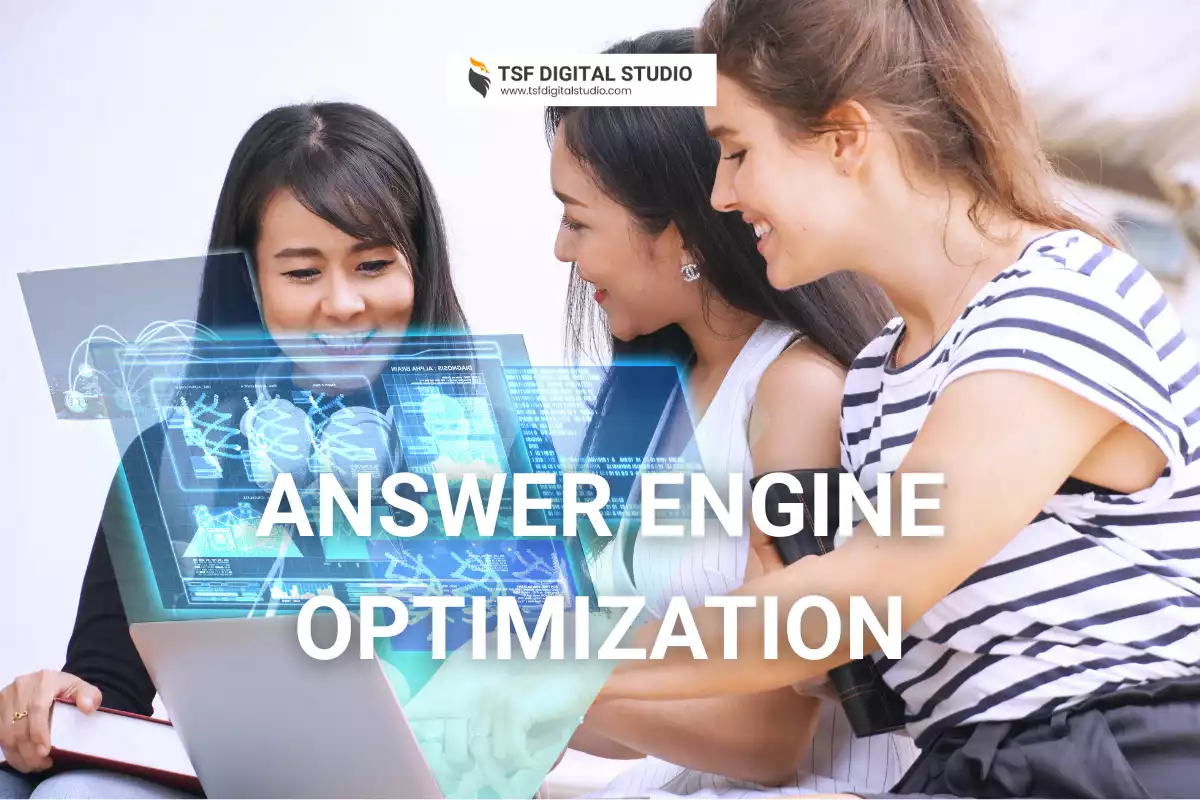Generative Engine Optimization (GEO) is a digital marketing approach aimed at enhancing the visibility and relevance of content within AI-driven search engines. Businesses need to invest in GEO because of the changing search environment, higher user, expectations, and the potential of unlocking new possibilities. GEO is the future of digital marketing in the Philippines.
TL;DR:
- Generative Engine Optimization (GEO) is a digital marketing strategy designed to boost the visibility and relevance of content within AI-driven search engines
- GEO focuses on how AI models synthesize information to generate answers, emphasizing detailed, authoritative content
- GEO is broader than Answer Engine Optimization (AEO), targeting content that AI generative platforms will cite and incorporate into replies.
- For businesses in the Philippines, GEO is crucial to adapting to the rise of AI-powered search, meeting user expectations for fast and precise answers, and unlocking new digital marketing opportunities.
- As AI search engines like ChatGPT gain popularity and longer engagement times, GEO is becoming the future of digital marketing.
Generative Engine Optimization (GEO) Explained
Generative Engine Optimization (GEO) is a digital marketing approach aimed at enhancing the visibility and relevance of content within AI-driven search engines, often called generative engines.
Examples of Generative AI Engines used in the Philippines are ChatGPT, Perplexity, Microsoft Copilot, Google Gemini, Clade, and DeepSeek.
Here is a chart from StatCounter GlobalStats showing the market share of AI Chatbots in the Philippines based on data from March to July 2025:
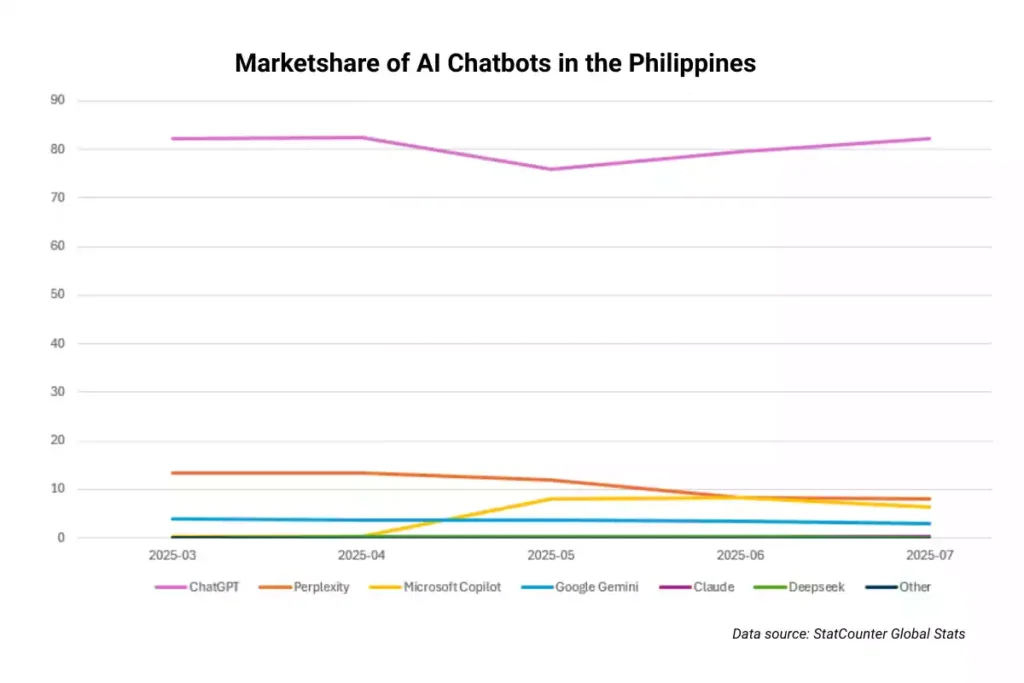
Based on this chart, ChatGPT is the most used AI chatbot in the Philippines. AI generative engines like ChatGPT blend traditional search functions with large language models (LLMs) to produce diverse response formats by synthesizing information from various sources.
Unlike traditional SEO, GEO focuses on optimizing content for how AI models interpret and utilize information on websites and other online platforms.
What is the Relationship Between AEO and GEO?
Answer Engine Optimization (AEO) and GEO both aim to increase content visibility in AI search environments but address different areas. AEO targets content optimization for direct answers, like featured snippets or voice search results.
On the other hand, GEO has a wider scope, seeking to establish content as a trustworthy resource that generative AI platforms (such as ChatGPT, Bing Chat, and Perplexity) will reference and incorporate in their replies.
Here is a table showing the key differences between AEO and GEO:
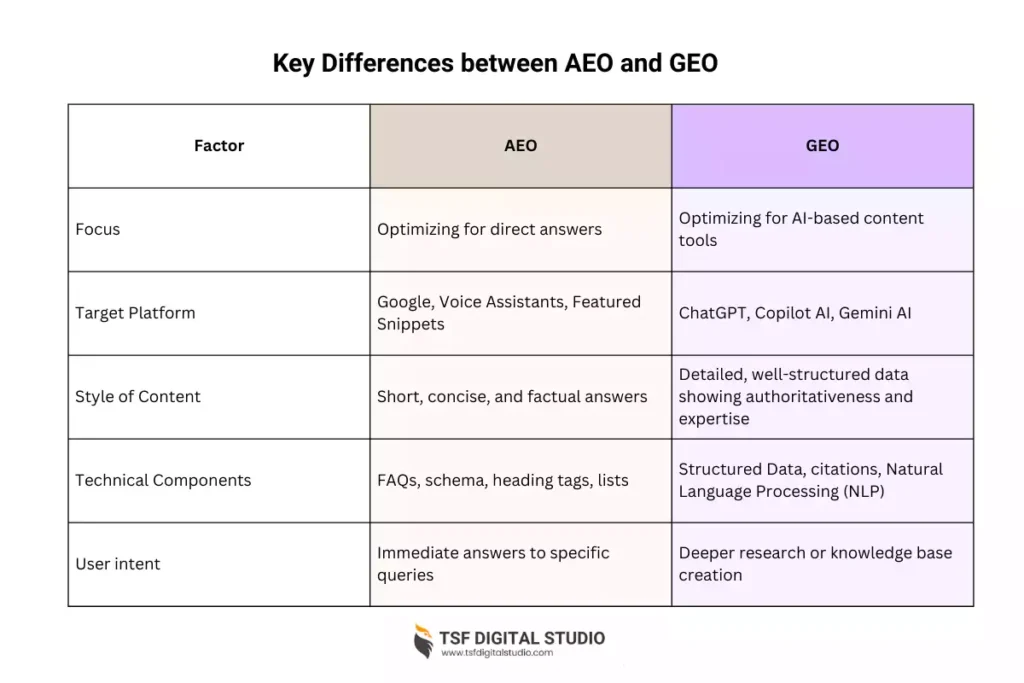
How GEO Differs from Traditional SEO
Focus
Traditional SEO centers on improving website rankings in search results using keywords and backlinks. GEO prioritizes how AI models comprehend and generate answers, focusing on relevance, context, and user intent.
Content Creation
GEO stresses producing detailed, well-organized content that meets user needs and aligns with the synthesis methods of AI models.
Measurement
Whereas traditional SEO tracks metrics like click-through rates and rankings, GEO measures how often content is cited or used in AI-generated responses.
Why is GEO important for business in the Philippines?
GEO helps business in the Philippines adapt to the Changing Search Environment
AI-powered search is becoming more common. Thus, GEO is essential for retaining visibility and connecting with audiences, in the Philippines and abroad.
GEO enables businesses to meet higher user expectations
Users in the Philippines demand fast, precise, and thorough answers from AI. Optimizing for Generative Engine ensures your content meets these standards so you would come up as the direct answer to user queries.
GEO helps businesses unlock new possibilities
GEO offers brands in the Philippines fresh opportunities to engage target audiences and position themselves as credible information sources. Businesses in the Philippines need to invest in AI for digital marketing.
On April 23, VITRO Inc., a data center service provider, just launched the first “AI-ready” hyperscale data center in Sta. Rosa Laguna. This facility claims to be capable of handling and processing big data for generative AI usage.
Generative Engine Optimization (GEOs) is the future of digital marketing
Generative Engines are the future of digital marketing. Traditional methods of digital marketing like running Google Ads or Meta Ads are no longer effectives.
Yes, Google and Facebook still dominate the internet market in the Philippines. Google still has more than 80% of global inquiries.
Based on research from FirstPageSage, global users in 2025 are still comfortable with using Google when finding answers to their questions, suggesting SEO is still important for businesses needing a strong digital presence. However, users of ChatGPT are showing longer time durations of use per session.
Here is a table showing the digital query market of Google and ChatGPT by the end of June 2025.
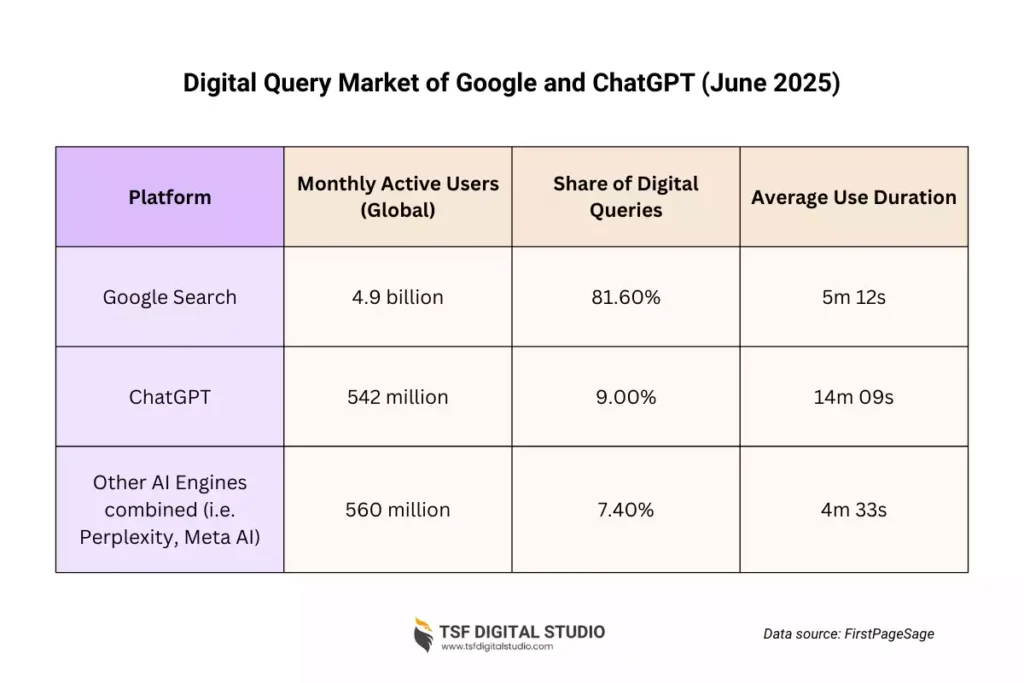
More session durations indicate a changing behavior among internet users. As ChatGPT improves its features, it may slowly yet continuously challenge Google’s dominance in market share of global inquiries.
This explains why Google invests heavily in its Gemini AI for its AI Overview section on tops of its Search Engine Results Page.
Lots of Filipinos as still hooked to Facebook as their means for social connection, finding products, and information sourcing online. Meta is also working hard to catchup, positioning Meta AI to provide user support to its account users.
According to Rolling Stone, Meta AI recorded around 700 monthly users as of January 2025. This trend is not surprising. Amazon’s AI, Alexa+, for instance, is built to provide shopping assistance for users. However, ChatGPT is taking massive steps in the AI race.
Early in 2025, for example, Open AI announced that ChatGPT will integrate a shopping feature to help shopping searches online. Just like Google, ChatGPT is already a household name especially in the Philippines. The younger generation of Filipinos are also warming up to AI Search Engine for learning and getting information.
Here are interesting data from Instructure Holdings, Inc.:
- More than half (63%) of Filipino students use Artificial Intelligence for academic tasks
- Around 63% of Filipino students use AI chatbots like ChatGPT to generate texts, while 58% use these tools for translating language
- Some 55% of students seek AI chatbots for assistance with challenging concepts, while 52% use these tools for summarizing academic articles
- Around 56% of teachers in the Philippines use AI to create learning materials for students, and 37% use these tools for making seminar plans; around 31% use AI for their transcripts
Schools are mirrors of the wider culture of the country. The trends of AI usage among students and teachers suggest that using AI chatbots like ChatGPT may already be a norm among Filipinos in all market niches.
Rolling Stone Philippines. (2025, April). How the AI expansion by Meta, ChatGPT will affect the Philippines. Rolling Stone Philippines. Retrieved August 20, 2025.
Search Engine Land. (2023). Google Search Bigger Than ChatGPT Search. Retrieved August 20, 2025
Statcounter. (2025). AI Chatbot Market Share Philippines. Statcounter Global Stats. Retrieved August 20, 2025.

